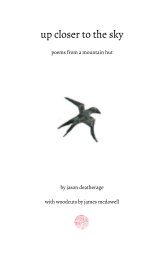The Universe ignores hopes and dreams
Things just Are, Naturally
Ignore your own preconceptions
Things simply Are, Naturally
Anything can spring from Nothing
So why not Wait and see what’s actually there?
The famous tale of the empty cup goes something like this:
A senior student from another town, who was full of knowledge and opinions about the dharma, came to the local Master and asked about Zen.
As the Master prepared tea, the student talked at length about Zen and his many opinions on the subject.
At one point the Master re-filled his guest's teacup but did not stop pouring when the cup was full. Tea spilled out and ran over the table. "Stop! The cup is full!" said the student.
"Exactly," said the Master. "You are like this cup; you are full of ideas. You come and ask for teaching, but your cup is full; I can't put anything in. Before I can teach you, you'll have to empty your cup."
Our preconceptions often obscure the very basic reality right in front of us. Our ideas about things often completely take the place of observations of those actual things, creating confusion for us when the world doesn’t work like we think it should. This mismatch between desire and reality is the root of human suffering in all of its forms, and forms the axiomatic basis upon which all of Buddhism is built. Only when we accept things as they actually are can we hope to understand things, or intelligently change them if they need to be changed. This is one of the meanings of “emptying one’s cup”.
To make decisions about the world, we need data about the world, and the more accurate and truthful the data is, the better the decisions we can make. Unfortunately, human psychology is such that we are very good at filtering the world to fit our preconceptions and rationalizing almost any behaviour if it fits our self-interest. When learning, there is value in the perspectives and skills that can be linked to the new information, but there is also value in absorbing new information without reference to prior knowledge. This not an all-or-nothing proposition; the reality of learning is the dynamic interplay of both, but in modern times, we are generally too attached to the subconsciously competitive need for perceived excellence in almost everything we do. For this reason, we find it very difficult to approach a new situation as if it is actually new. We must always nod knowingly to ourselves, or re-explain things to ourselves, even as the information is presented to us. This is no less disrespectful than actually talking over the Master as he shares his experience with you.
Psychologically, we habitually ‘talk’ over most new information in some way, even our own intuitive grasping of a situation. Our cup is usually so full of our own imaginings, insecurities, and need for recognition that we are unable to truly and wholeheartedly learn except in the most base sense. How many of us have been in the presence of a Master and had to bear the endless ‘clever questions’ asked by people that are not actually interested in learning from the Master, but are instead far more interested in being seen to speak with the Master? Their questions are formed to display their own knowledge to the Master (and by extension all of those watching the exchange), rather than to elicit a genuine outpouring of the Master’s knowledge and experience. This situation is exactly analogous to how we psychologically approach new information in many situations.
In the realm of the sword, a full cup is a fatal proposition when faced with a truly skilled opponent. There is not time to translate experience through the intellect and form correct actions. Even worse, the formation of correct actions in these conditions is poisoned by preconception, anticipation, and insecurity. By filtering our experience through an untrained mind in this way, we operate entirely on the level of guessing.
“Anything can spring from Nothing
So why not Wait and see what’s actually there?”
The usual ways of martial training are to make people into very good guessers, but ultimately a guess is something false, because it is based on something that hasn’t happened yet. In the extreme situation of a sword match, we must cultivate the ability to act on real information rather than false information. Much of the ‘technique’ and ‘strategy’ of sword work is founded on various types of deception and misdirection, but ultimately the opponent is trying to cut or pierce us with their sword. If we look beyond the deceptions and only act and respond based on the opponents ‘real’ intention (to cut or pierce us with the sword, or even more basically: to injure or kill us), we suddenly become almost immune to feints and tricks. But this is a difficult path to cultivate, because it involves courageously assuming deep risks, and reversing our normal perceptions of action and reaction.
Most people will tell us that it is better to be proactive than reactive. Proactivity is seen as positive, while reactivity carries a connotation of being slow to respond and unprepared. Nothing could be further from the truth. Proactivity is the realm of guessing and potentially false information. Reactivity operates based on real information. While one can become a good guesser, ultimately, proactivity is a course of action founded entirely on false data, or at least data that has not yet been observed. Reactivity is based on observation of what is actually happening, and the creation of a course of action based on real events. Both course of action have risks and rewards, but as we’ll see, reaction is a profound path that pursues truth in all of its forms.
Let’s use an example in a sword context. To start with, we’ll be purely defensive, only blocking an opponent’s strike.
The opponent attacks, swinging at our head. Being proactive, as soon as we see them start the attack, we reach out and intercept their attack, stopping it before it can develop fully. But now imagine that the opponent has feinted. Now our reaching out places us in mortal danger; to return to a position that allows us to protect ourselves becomes difficult now that we’ve reached out to the opponent. By trying to get ahead of the opponent’s timing, we have ended up dangerously behind them in time. By committing to our proactivity, we have ended up almost irrecoverably out of position and right where the opponent wants us. In this case, our guess was wrong and the results are potentially fatal. There are many reasons why this is problematic. Physically, it means that we’re constantly pouncing on what we predict will be the opponent’s actions, but as we’ve discussed, these predictions are ultimately guesses. It also means that our mind is constantly grabbing onto courses of action that might or might not develop. When the mind attaches to a particular thing, it loses its freedom to process other things effectively. In sword work, we aspire to a particular freedom of action for the body and mind that allow them to move freely around without ‘getting stuck’ on any particular thing.
Now let’s imagine the same scenario, but with a reactive approach. The opponent swings at our head, and instead of reaching for their attack, we wait until it is almost at its target. By doing so, we accomplish at least two important objectives: we observe the opponent’s technique and can determine its actual intention, and we also remain in the best position from which we can respond to feints and changes in the opponent’s plan. In addition, we draw a certain level of commitment from the opponent as their techniques are not being interfered with and seem to be succeeding. Because we are not interfering with their attack, they feel no need to change what they’re doing. We simply watch their technique approach and then respond efficiently at the last moment, when it’s too late for them to change course. By Waiting in this way, the truth of the opponent’s technique reveals itself.
In terms of timing, this approach turns the conventional thinking upside down. Usually, we are told we need to seize the initiative and always be ahead of our opponent. With the empty cup approach, we allow them to have the initiative, allow them to commit to their actions, and act only when necessary. By doing this, we end up ahead of the opponent in time when it really matters, and become much more resistant to feints and misdirection.
Practical exercises:
- Have a partner attack and practice blocking at different times. Use the same attack for now, so that timing can be consistently applied. Block as you usually do for awhile, then try to block as early as possible. Once you’re ready, start trying to block as late as possible. Let their sword get as close as possible before you intervene.
- Now have the opponent use a feinting technique followed by a genuine attack. Try the 3 timings (‘normal’, early, and late) and observe the result. Is there a timing that makes it hard for them to successfully fake?
- Repeat the first 2 exercises but now add your own attack after your successful block. Observe how effective this is at each of the 3 timings.

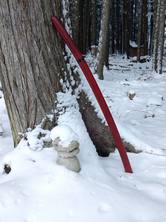
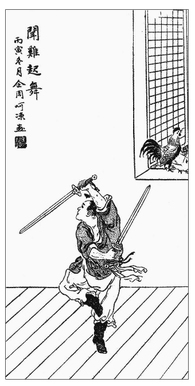
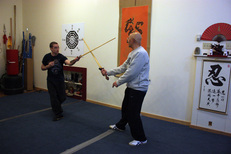
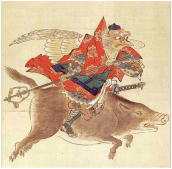
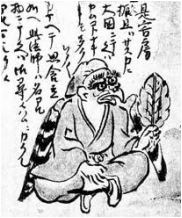
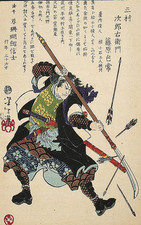
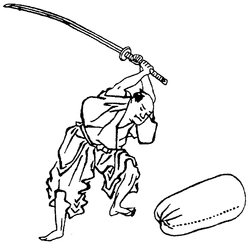
 RSS Feed
RSS Feed
